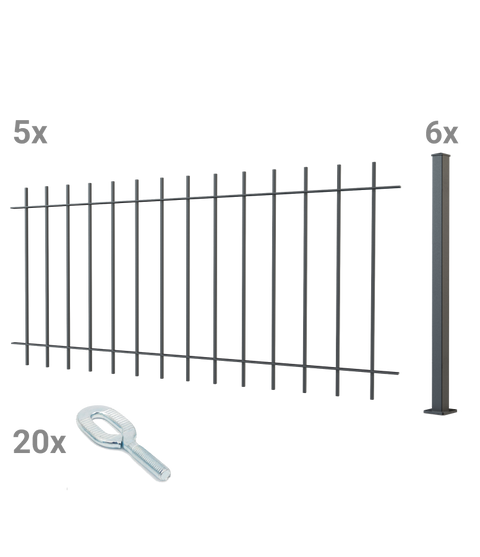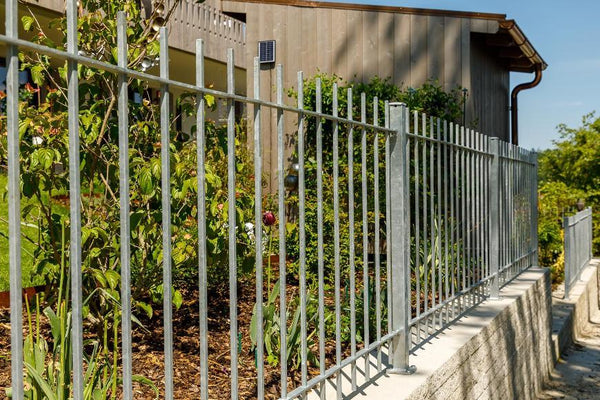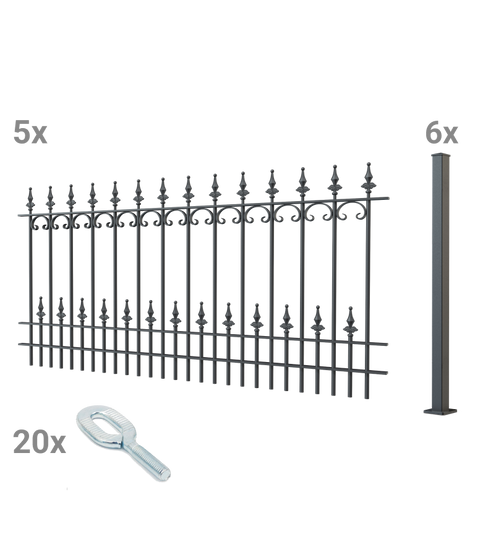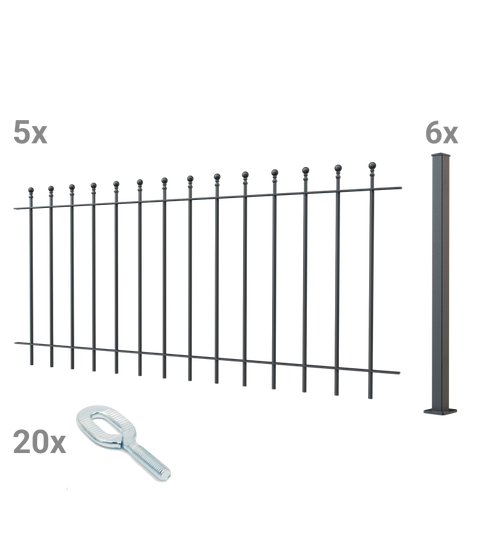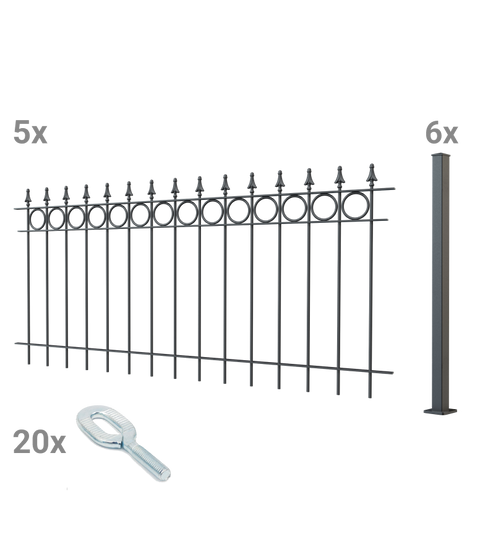Delimiting your property – with little effort to a new fence

The right property boundary plays a crucial role for homeowners – not only in terms of security, but also for a harmonious overall appearance of their outdoor space. In this guide, you'll learn which steps are important when fencing your property and what you should pay particular attention to with regard to building and neighborhood regulations. With thoughtful planning, you'll save time, money, and effort!
In a nutshell: What you should consider when demarcating your property
Before you begin planning, you should clearly define your requirements and goals, such as the desire for more privacy, security, or a particularly aesthetic design. The characteristics of your property, such as size, shape, or possible slope, also influence the choice of the right fence.
Make sure you know the exact boundary line to avoid conflicts. Use documents such as property plans or cadastral maps, and consult a surveyor if in doubt. Careful budget planning is also crucial. Choose materials that meet both your functional requirements and your design standards. Wrought iron fences, for example, are a particularly durable and low-maintenance choice.
Before you finally begin construction, you should also consider the legal requirements. Find out about local regulations regarding the height, design, and choice of material for your fence to avoid trouble with neighbors and authorities. Many states and municipalities also have specific regulations that you should check. Want to learn more? Then read all the tips in detail below!
Demarcating Your Property: Correctly Defining Your Requirements and Goals
Before you begin planning your property boundary, you should be clear about your individual requirements and goals. Ask yourself: What purpose should the boundary serve? Do you want more privacy, protect your children or pets, prevent unauthorized access – or is the visual design more important? Often, several aspects play a role.
The conditions of your property are also crucial: A large area not only means higher material costs, but also more effort for installation and maintenance. And if your property isn't rectangular, but has, for example, angled corners or a steep slope, customized solutions may be required.
With a clear objective and a realistic assessment of the conditions, you lay the foundation for a successful and functional demarcation of your property from the street and neighboring properties.

How to determine the exact boundary of your property
Before you mark off your property with a fence, you should also make sure you know the exact boundary. Only if the boundary is correctly placed can you avoid future conflicts with neighbors or authorities.
The first step is to review the documents you received when you purchased the property. This usually includes the property plan, land registry extracts, and similar documents that provide information about the exact dimensions and location of the property boundary.
You can also take a closer look at the land itself: Physical evidence such as boundary stones, old fence posts, walls, or other markers often provide clues to the boundary line.
If the boundaries are unclear or the plans deviate from the current state, it is recommended that you hire a publicly appointed surveyor as the next step. They will conduct a professional survey and can tell you exactly where you can mark the boundaries of your property from the street or neighboring properties – legally and reliably.
Budget and material selection: How to achieve a durable and low-maintenance fence
A well-thought-out property boundary requires not only careful planning but also a realistic budget. Consider all costs – from the necessary materials and installation to maintenance and any repairs. Not only the purchase price, but also the long-term costs are relevant for budget planning if you want to re-fence your property.
Wrought iron fences, for example, are particularly low-maintenance and durable. They are extremely robust, weather-resistant, and require little maintenance – a clear advantage over wooden fences, which are sensitive to weather and require regular painting or oiling.
Tip: If you buy your fence as a complete set, you can save even more. At ELEO Express, you can get practical value sets that already include fence elements and matching posts – ideal for an efficient and visually appealing demarcation of your property from the street or neighboring property.
Individual solutions for special properties
Not every property is the same – uneven terrain, inclines, slopes, or unusual shapes place special demands on property demarcation. In such cases, standard solutions are often insufficient.
At ELEO Zaun, you have the option of customizing your wrought iron fence – in height, width, and design. This way, you get a boundary that is not only functional but also blends harmoniously into your property. Whether for demarcation from the street or for enclosing winding property lines: Custom-made solutions ensure a harmonious overall appearance and optimal use of your outdoor space.
Get a free, non-binding consultation and create a quote that precisely meets your requirements in just a few clicks.
For individual production at ELEO Zaun

Legal requirements for property boundaries: What you should know
Do you already have an idea of what you need and how much your new fence should cost? Then be sure to also find out about the local building regulations. Regulations may exist at both the state and municipal levels that relate to the permissible height, design, and materials of your fence. Anyone wishing to re-delineate their property should not make any decisions without examining the legal framework.
A review of the relevant building regulations or the neighboring rights law of your federal state is the first step. In Bavaria, for example, the Bavarian Building Code (Article 57) stipulates that fences up to two meters high may be erected within a built-up area without a permit – provided no other municipal regulations conflict. However, in so-called outlying areas (i.e., outside built-up areas, for example, on the outskirts of town), a permit is required. However, there is no general obligation to erect a fence in Bavaria.
The situation is quite different in Berlin, for example. There, the Berlin Neighbor Law (§21-26) stipulates that every property owner is generally required to enclose their property with a fence that conforms to local custom. "Customary" means that the fence's height, shape, and material should reflect the immediate surroundings. The decisive factors here are the streetscape or the character of the respective residential area. A 1.25m high chain-link fence is generally considered customary in Berlin. This design is common in many residential areas and can therefore usually be implemented without any problems. However, higher-quality or more modern fences—for example, made of metal or with a privacy screen—are not fundamentally excluded. As long as they blend in visually with the streetscape.
In addition to state laws, municipal ordinances or development plans may contain additional regulations – for example, regarding maximum height, color, or the permitted type of fence. These regulations can usually be found on your municipality's website. If in doubt, it's best to ask your local building authority or town hall directly.
Professional support – ask a professional
If you're unsure, it's worth seeking professional support. Landscape designers or specialized fence builders like our experienced team at ELEO Express will help you find the right solution for your property boundary – from selecting the right fence model to optimal placement and height. This creates a functional yet aesthetically pleasing fence for your home without much effort.
Trust in our expertise – together we will create the ideal boundary for your property.
Contact us – we look forward to your inquiry!

Tip: Are you looking for the perfect fence to demarcate your property from the street or a neighboring property? Discover our selection of wrought iron fences in various designs. »

Artikel teilen


